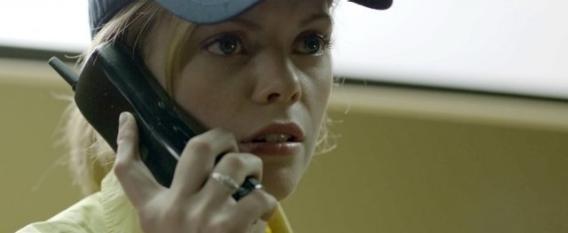The press screening for Craig Zobel’s Compliance was probably about half an hour in when the murmurs began. “Oh, come on!” someone loudly sighed. Much of the audience had become audibly uncomfortable with the representation of true events in which characters behave in seemingly inexplicable ways. Several—including one woman who yelled out “Give me a fucking break!”—walked out before the movie’s most disturbing moments had even occurred.
In a Q&A afterwards, psychologist Stanton Peele cited the Sandusky case as a recent example of shocking compliance with authority, and the editor-at-large of Psychology Today, Hara Estroff Marano, pointed to the famous Milgram experiment, which showed that subjects were overwhelmingly willing to administer increasingly high voltage “shocks” to their peers whenever they incorrectly answered a question.
But Compliance will undoubtedly continue to draw detractors from those who contend that it is exploitative or unrealistic. A close look at the events this film is based on, however—the last in a 10-year span of similar prank calls, most of them to fast-food places—suggest otherwise. In order to fully understand the movie, you should read up on those events—even though you may feel even worse after doing so.
Note: Spoilers follow, so stop reading here if you’d prefer to remain unfamiliar with the story.
Compliance takes place almost entirely within the tiny fictional fast food restaurant Chick-Wich, and especially the manager’s small office, in which 19-year-old Becky is detained over the course of an entire work day, most of the time wearing nothing but an apron. The difficulty of watching the movie is not just the feeling of implausibility—multiple characters, incredibly, go along with various crimes against the teenager, prompted by nothing more than a man on the phone claiming to be a police officer. It’s also that each female character seems entirely devoid of agency.
Supervisor Sandra (Ann Dowd), for instance, despite her professional title, doesn’t think twice when “Officer Daniels” tells her to bring a man in to watch Becky, clad in only the apron, while she continues to manage the restaurant. She brings in a rotating crop of men, all of whom resist the voice on the phone to some degree. The same is not true of the women, including Becky, who buckles under two fears—that of the law and of potential joblessness. It is extremely frustrating to see only men realize that something is amiss and refuse to cooperate. This, I think, is partly why some viewers have argued that the movie makes “violence against women entertaining.”
Compliance is not a documentary, but these details match the reported events of the infamous case it draws from. If you’ve watched the 20/20 interview with the real-life Becky, Louise Ogborn—along with the accompanying surveillance footage—you know that the movie is no fantasy. Ogborn says that she begged her supervisor to let her go to the police station instead of submit to a strip search, but that she was ignored—and that ultimately she feared losing her job. When asked why she never tried to run away, she said, “I wanted to so bad,” but “I couldn’t bring myself to humiliate myself worse than I already was.”
The extreme discomfort that Compliance prompts in many viewers has more to do with the events that are depicted, not the film’s treatment of those events—in fact, Zobel is careful to avoid the exploitative depiction of the female body that you see, for instance, in any number of horror films. The movie has some nudity, but the camera does not linger on her exposed body, nor do we see more than an ambiguous shot of her rape. If you compare the film to the security-camera footage that’s available, it becomes clear that Zobel did his best to depict the incident as it happened, without taking too many creative liberties to make his movie more “entertaining.” The subject matter alone is enough to get anyone talking.
At the press screening, a handful of audience members and panelists managed to discuss the film thoughtfully, but they were occasionally drowned out by people who spoke loudly over them. Given that this was an audience of psychologists and members of the press, many of whom knew at least something about what to expect, I suspect the general public will be just as vocal, if not more so. If you choose to go see it, don’t be surprised to see plenty of walkouts. But I strongly recommend staying until the end.
